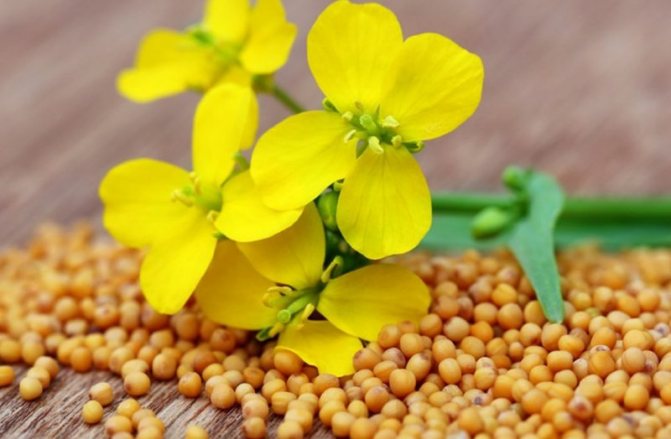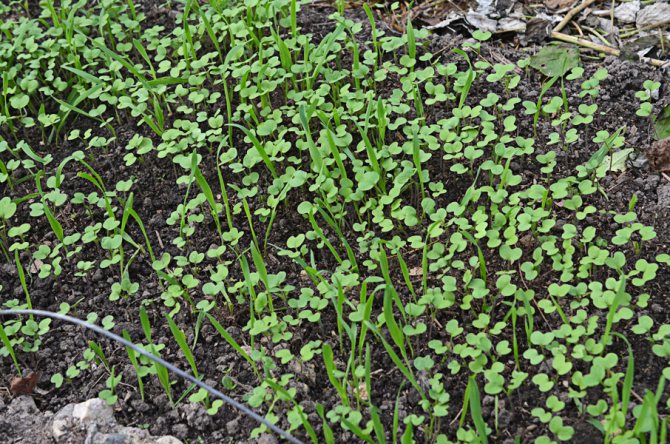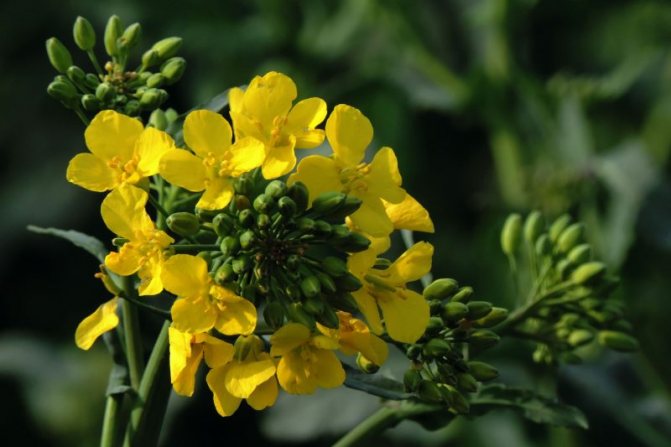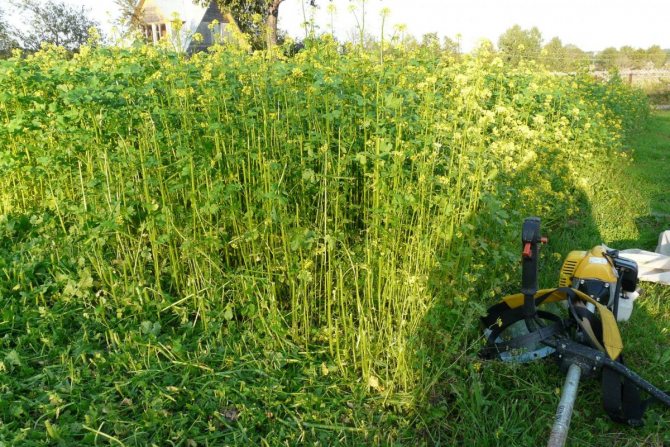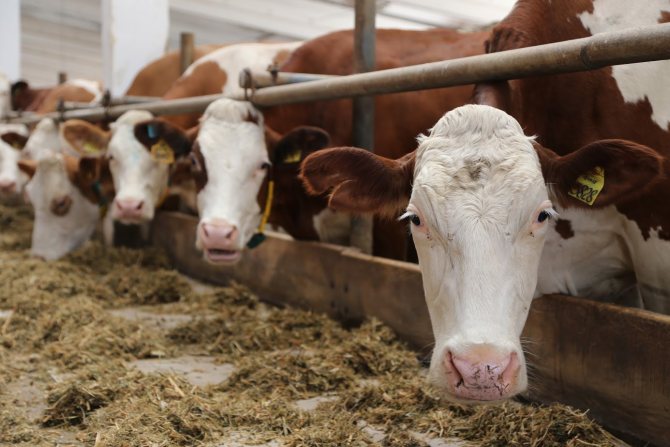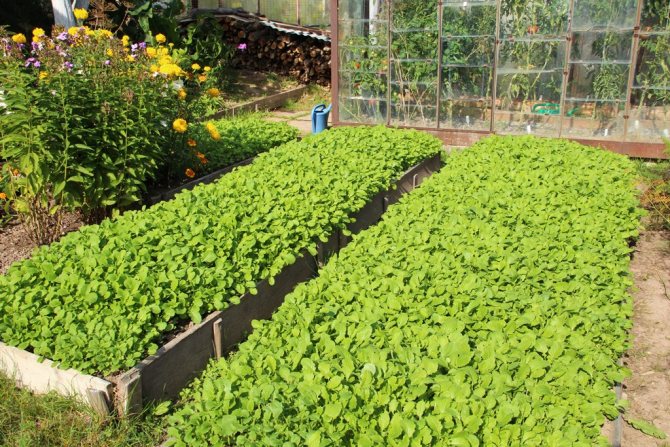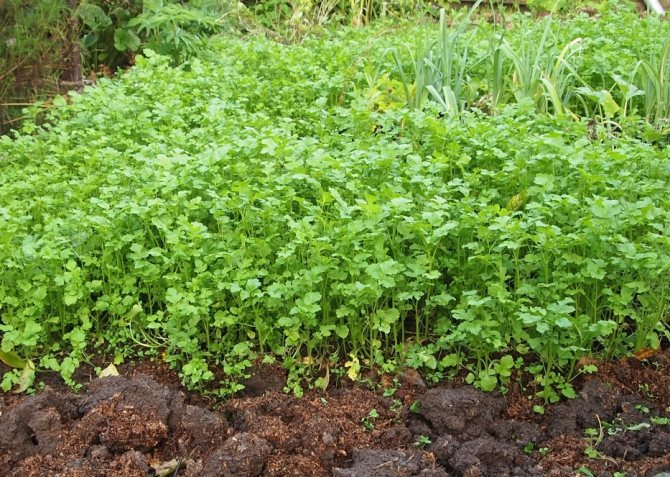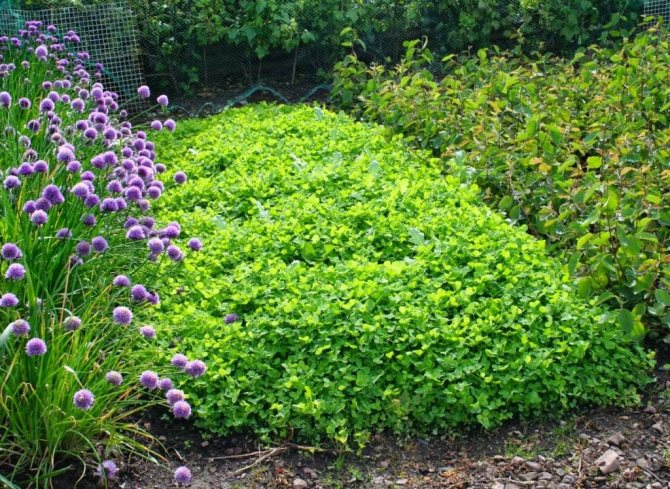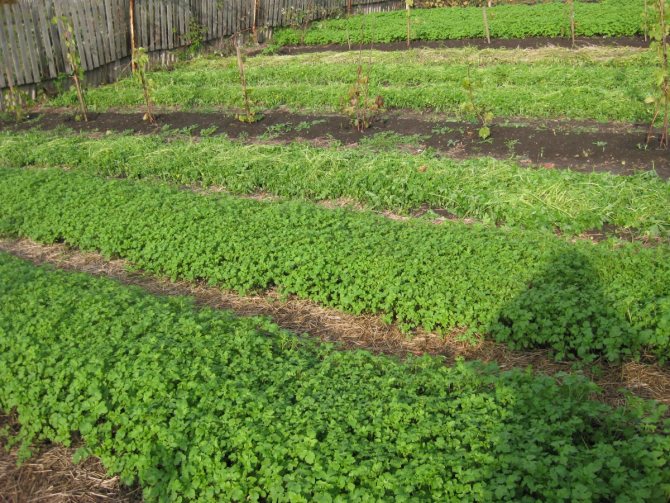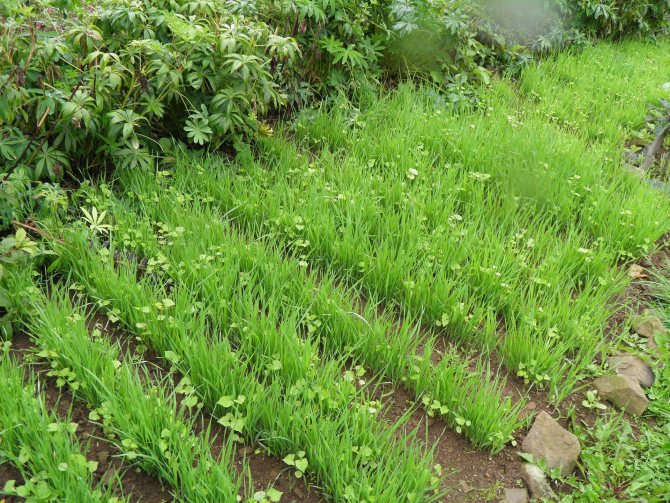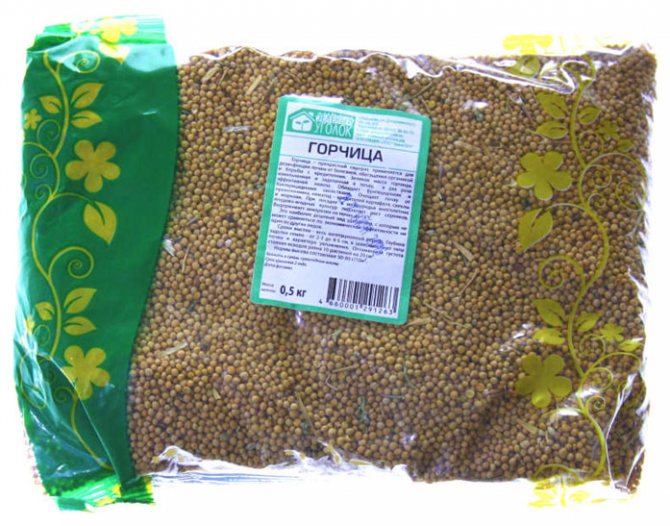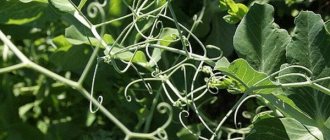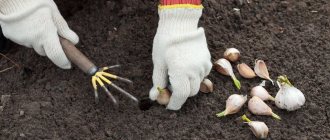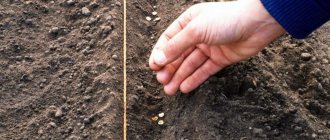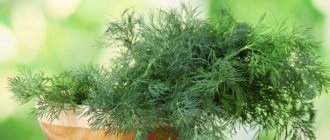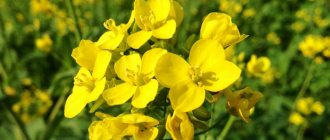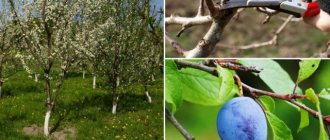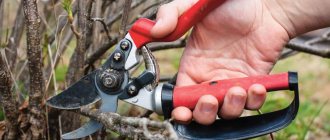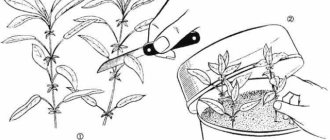When the beds are empty (the harvest is harvested), the time will come to restore the fertility of the soil and enrich it with useful micro- and macroelements, in other words, sow green manure.
So, obviously, you got to this material, because want to create the most favorable conditions for the growth and development of plants in the coming season.
Well, then we will analyze all the main questions regarding the choice of a certain type of green manure, the rules of cultivation and the timing of sowing in the fall (as well as early spring and summer), the advisability of mowing their tops and much more.
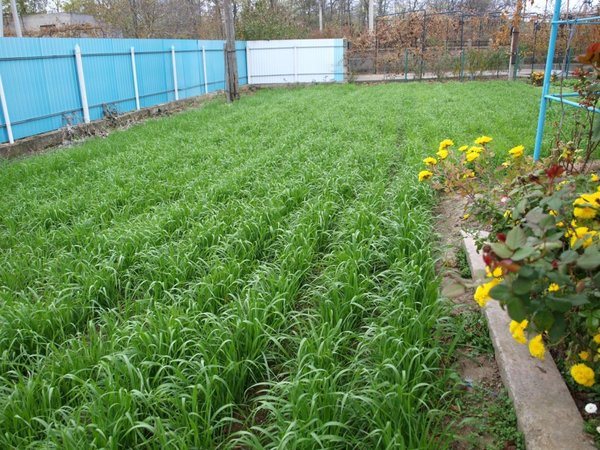
When to dig up the ground with mustard. Do I need to dig up mustard sown in the fall?
Before the end of the summer cottage season, gardening enthusiasts are concerned with the question of how to improve the fertility and health of the soil? Including the question of whether it is necessary to dig up the mustard? Plants take nutrients from the soil, it becomes less fertile, depleted. Many summer residents use green manure to restore the soil.
The benefits of green fertilizer
These are plants that, penetrating into the earth, endow it with minerals and organic substances. Phosphates, nitrogen, potassium. Siderata affect the improvement of the soil structure. The most commonly used are legumes, lupine, rye, including mustard. The plant has a useful composition before the appearance of peduncles, then it loses its valuable substances.
Plowing plants into the ground is called green manure. The green mass is mowed, crushed, and dug into the soil where it grew. The root system, which is in the soil, will rot, serve as fertilizer and give a long-term, positive result.
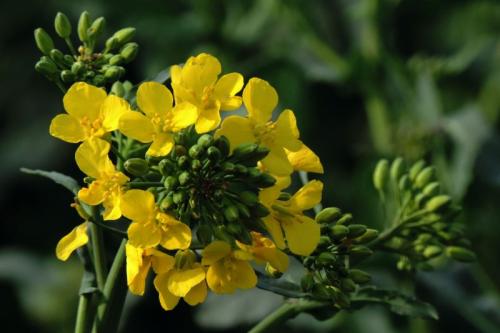

Mustard can be - Sarepta, white. White mustard is used as a fertilizer. It is very effective for getting a good potato yield. White mustard has many advantages among siderates:
- It grows well, develops rapidly at low atmospheric temperatures, is able to withstand frosts up to - 3-5 degrees;
- Does not need special soil properties, grows quickly in any soil;
- It decomposes in the soil, has the most valuable effect, nourishing it and restoring its capabilities;
- Often used for mulching, to cover from frost;
- Mustard prevents nitrogen from leaving the ground. Combining it with legumes increases the content of the element in the soil;
- Legumes perform the function of a getter, mustard - a nitrogen processor;
- Powerful roots make it possible to supply valuable substances for plants, microelements from the depths. The root system extends a meter deep;
- The largest nitrogen content is in the greenery and the root of the plant. Digging makes it possible to transfer all useful microelements to subsequent crops. It has a stimulating effect on plant growth and formation.
Features of application to the soil
The local climate determines the sowing dates for white mustard. I do this in the fall, and in August - September. Sowing is carried out on the vacated area, where potatoes, cereals, and strawberries grew. Mustard has enough time to build up greens. For example, on one hundred square meters of land, after harvesting, about 400 kg of plant fertilizer will grow.
The stalks of young mustard should not be mowed with the arrival of frost, they will fall on the soil themselves. By doing this, they will save moisture, will not allow to freeze. With the onset of spring, the fate of mustard is dug up.In autumn, green manure is sown for spring germination; this procedure must be carried out on loosened soil. To protect against washout during the spring flood, deep embedding is carried out.
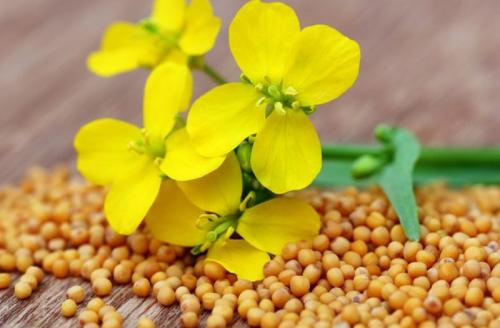

After sowing, sprouts appear on the fourth day. After 30 days, they will reach 15 centimeters. To ensure good growth, it is necessary to water the plants. Small shoots are mowed due to the fact that they harden quickly, and there is a problem with chopping. At this time, the plant may lose its value due to the appearance of peduncles. With the appearance of seeds, mustard can multiply and become an unnecessary weed that is difficult to remove.
The best time to dig up mustard is before flowering. Only at this moment is it full of nutrients that are so necessary for the soil to restore and fertility. Using this method, the yield increases several times.
Frequently asked questions and answers to them
- Please tell me when to plant mustard or rapeseed for subsequent digging? To enrich the depleted land... Answer: Mustard is sown immediately after harvesting vegetables. You can mow it during flowering, but I prefer to leave it until winter. In the spring, overwintered mustard is used as mulch. It is not necessary to dig up the sown mustard.
- What exactly does mustard give to the soil? Answer: Mustard belongs to the cruciferous family. Able to assimilate nitrogen from the air. In addition, it deacidifies the soil - it can replace the introduction of lime. And the decaying green mass of mustard is a good organic fertilizer. That is, it will need to be mowed and dug up the ground with it.
- What role do mustard roots play? Answer: The roots that remain in the ground after growing mustard will hold together the topsoil, which is the most valuable. The roots protect the topsoil from leaching and various types of erosion, as well as from the spread of dangerous diseases of cultivated plants.
When to mow mustard. When to mow mustard
1-1.5 months after sowing, mustard grows up to 15-20 cm, it is cut with a flat cutter or cultivator, or mowed (as you like), after spilling with a solution of EM preparations, which accelerates the fermentation processes and creates favorable microbiological conditions leading to enrichment soil nutrients and trace elements.
I want to draw your attention to the fact that the processes of decomposition of plant residues, humification take place only in the presence of moisture in the soil (and mustard is a culture-loving one, as mentioned above), therefore, if you live in an arid region, then it is effective only with irrigation, if in Droughts in your area are intermittent, so irrigation is required during droughts.
But take a look
Well, how do you like this green fertilizer and phytosanitary? Sow - you won't regret it! If you have any difficulties with the purchase of seeds, then you should go here.
High fertility and large yields! See you later!
With all respect, Andrew!
The introduction of organic fertilizers into the soil has a beneficial effect on the future harvest. It has long been known that green manure is the simplest, most affordable and safest way to restore soil. White mustard is a green manure that will not only prepare the ground for but also protect the site from some pests and microorganisms.
Why sow siderates
Siderata are specially planted crops that are sown in the off-season for their further incorporation into the soil. Such crops have a well-developed root system. Thanks to the roots, beneficial trace elements and minerals rise from the lower layers of the soil to the upper ones, and the soil is thus enriched. Siderat has the greatest benefit, it converts hard-to-reach nutrients into easily digestible ones, and the roots and stems of white mustard provide powerful resistance to such potato diseases as scab, fusarium and late blight.


Experienced gardeners have long been using this technology in crop rotation. It is not inferior in efficiency to the introduction of humus and manure and has a number of advantages:
- low cost;
- ease of planting and further processing;
- some crops drive out weeds;
- most siderates rid the soil of pests;
- green manures quickly rot, improve structure and enrich with fiber and humus;
- the site is not clogged and contaminated from the outside, compared to the introduction of manure.
An excellent siderat is mustard. Basic properties
The beneficial properties of this plant made it a real find for summer residents. Although many probably have a different idea about mustard. It is widely used in cooking, food industry, it is a delicious spicy snack, as well as a valuable honey plant. The collected honey tastes good, has a light color and a luxurious aroma. Mustard is also used in medicine. In addition, it turns out that mustard is a siderat, which has a lot of advantages over other cultures.
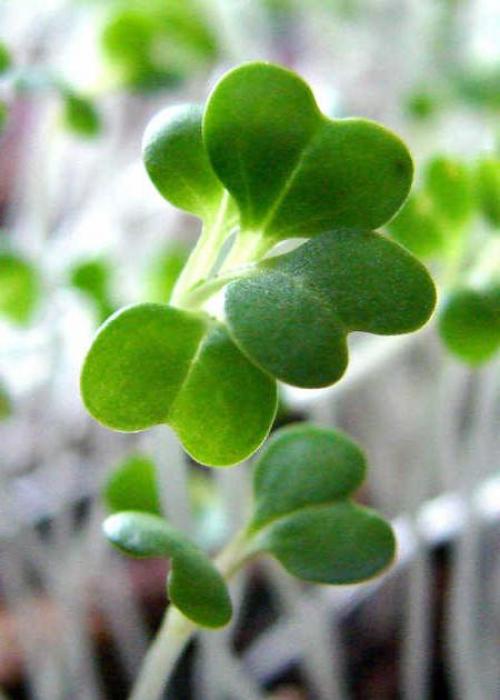

How and when to plant white mustard
You can plant at any time at above-zero temperatures. Seedlings appear in dry soil on 4-5 days, in wet ones - on the third. The seeds are scattered, and then they are slightly buried with a rake, or they are sown in the furrows and sprinkled with 2 cm of earth. No further care is required. Before flowering, the greens need to be mowed, sealed into the soil with a flat cutter. If green manure is sown in winter, that is, after harvesting potatoes, then it is left in the soil until spring.
Green manure plants contribute to the restoration of the fertility of the land and keep it in this state for a long period. Various cereals and legumes are used as green manure. But still, gardeners and gardeners give more preference to white mustard. This member of the cruciferous family has many positive qualities.
- Unpretentious in care and maintenance.
- Gives high yields.
- Possesses early germination.
- Green mass contains a large amount of nutrients.
- It is a cold-resistant crop.
- Scares off harmful insects.
- It is able to prevent the spread of most plant diseases.
The difference between spring and autumn sowing
Mustard is white as green manure when sowing depends on the purpose of the site. You can sow seeds in open ground in the spring or autumn. White mustard is sown in the spring, from the beginning of March. In the southern regions, where spring comes earlier, you can plant seeds in the garden in the third decade of February.
In order for the mustard to feed the earth, it is planted 30-35 days before the main planting of horticultural crops. If there is a greenhouse, then you can plant seeds there; after the plant reaches 10-15 cm, mow and deepen in the garden.
Suitable soils for sowing seeds:
- Sandy loam;
- Cultivated peat soils;
- Sod-podzolic, fertilized with organic matter.
Mustard is a moisture-loving, frost-resistant plant; it is recommended to plant it on the sunny side of the site.
Is it possible to sow mustard in the fall, when is it better to do it? In the autumn, seeds are sown in early September, after the main harvest. The plant is left to winter, it is embedded in the ground for feeding for the next season.
For the southern regions, October - early November is considered a favorable time for disembarkation. Seedlings germinate well even at plus 2-3 degrees. Seeds planted in October grow up to 10 cm in height.
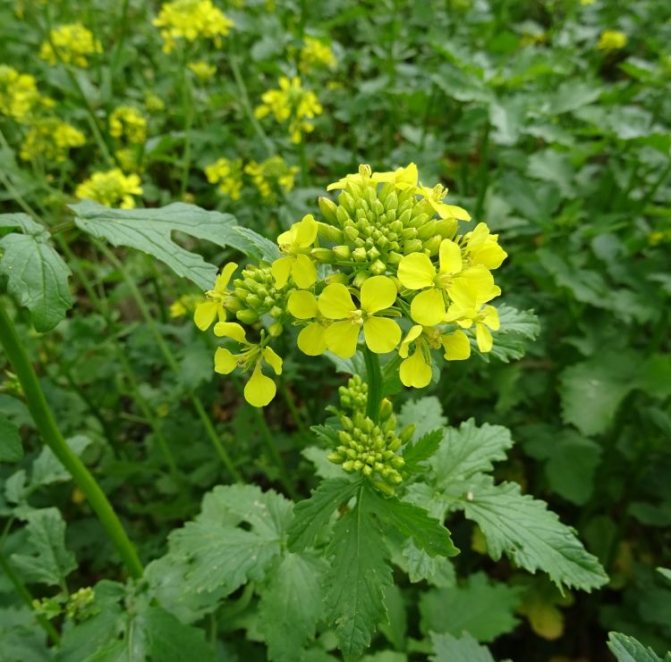

It is recommended to sow the seeds immediately after harvest, before the weeds begin to germinate. A bed for white mustard must be thoroughly cleaned of weeds and roots.
Basic rules for sowing white mustard in the fall:
- After harvesting, clean the beds provided for a useful plant from the remnants of vegetables, stems, roots, remove weeds;
- Water the plot with water, the soil must be moistened;
- The earth must be sprinkled with rotted manure or humus. For 1 m², 5-7 liters of fertilizer is enough. Additionally, you can add a little dolomite flour;
- Dig up the plot, loosen it with a rake. Remove large stones, clods of earth;
- For autumn planting, greens are used as green manure, so there is no need to make grooves, measure the distance. Seeds in bulk are poured onto the garden bed (5 g of seeds are consumed per 1 m²);
- Bury the seeds a little into the ground, a maximum of 1 cm. Pour the plot from a watering can.
Seedlings appear in 5-7 days.
Each planting method affects the soil and nearby plants.
Pros of spring planting seeds:
- Spring sowing allows you to nourish the soil with the necessary microelements before planting horticultural crops and to destroy parasites and pathogens in the ground;
- Seedlings inhibit the growth and development of weeds for almost 3 months.
The downside is the inability to plant spicy greens, cruciferous plants next to the garden bed.
Positive aspects of autumn planting:
- Rapid growth of seedlings - grow well even at low temperatures down to -5 degrees;
- The plant serves as mulch in winter, prevents soil freezing and dehydration;
- Due to the content of essential oils in the leaves and stems, the soil is disinfected;
- Autumn gives the opportunity for good plant growth, the root system fully develops and performs the function of loosening the earth;
- Erosion prevention.
Among the disadvantages of autumn planting are:
- Birds can peck on a significant amount of seeds if they remain on the surface;
- In frosty and little snowy winters, the plant may freeze out;
- In the spring, it is not recommended to plant cabbage, radish, lettuce in the place where the mustard grew.
The active growth of greenery depends on regular soil moisture and warm weather. It grows well in sufficient light. In one month, it can grow up to 20 cm in height.
This should be done for several reasons:
- After the formation of flowers, the stems and leaves begin to coarse, which will significantly slow down the subsequent decomposition of the plant in the ground after digging. Delicate leaves decompose faster and saturate the soil with beneficial microorganisms;
- During the flowering period, the plant consumes nutrients for the growth of flowers. The yellow flower subsequently forms pods with seeds. This reduces the benefits of greens like green manure, which is essential for berries and vegetables;
- After flowering, seeds are formed. Propagating a plant in this way causes it to grow erratically, like a weed.
The beveled tender green mass is immediately dug up, a little deepening into the ground with a shovel. In dry weather, it is important to water the dug area periodically, to maintain soil moisture. This allows organic matter to decompose faster and penetrate into the ground.
Even gardeners without experience in growing various crops can cope with leaving. The main purpose of green manure is to saturate the soil with such useful substances as phosphorus and nitrogen. When digging, the aboveground part of the plant enriches the soil with these elements. And in the new season, they are easily absorbed by the planted plants.
Dignity
- high germination rates and active growth;
- frost resistance, plants can withstand cold temperatures up to minus five degrees;
- the seed does not need to be prepared in advance;
- culture protects plantings from slugs, prevents the invasion of Colorado beetles;
- where green manures were grown, weeds grow less often;
- essential oils contained in the plant will help destroy the pathogens of late blight and scab in the soil;
- the plant is able to assimilate even those substances that are inaccessible to other crops;
- sowing mustard before winter is an excellent prevention of erosion, where there is a likelihood of soil erosion, the crop is sown thickly.
disadvantages
- if you do not mow the plants in time, they bloom, and the seeds are spread with the help of the wind, fall into the soil and sprout, in the future mustard will grow like a weed and it will not be easy to remove it;
- this green manure is not suitable as a precursor for cruciferous plants (cabbage, turnips, radishes);
Late sowing
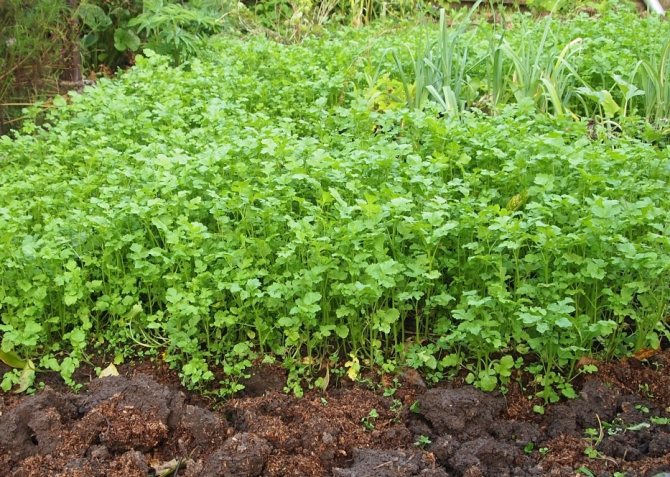

If the mustard is sown early and has time to sow before frost, it is advisable to mow it.
The cuttings are partially composted, used as mulch or plowed into the ground. After plowing, the bed is spilled with one of the biological products - "Shining", "Baikal 1M", "Gumi-Omi". They will saturate the topsoil with beneficial microorganisms that accelerate the decomposition of organic matter and prevent the growth of pathogenic fungi and bacteria.
In all other cases, it is not necessary to mow the grown mustard. It is left to grow until frost, and before winter it leaves green. By spring, the mustard melts, the top layer of the soil remains soft and loose, no crust forms on it after the snow melts. Experienced gardeners note that in spring many earthworms live in such a land, for which rotted mustard is an excellent food.
As a result, by the beginning of the new summer cottage season, the soil on the garden bed is completely ready for planting berries and vegetables that are demanding on soil fertility. It is quite loose, structured and healthy.
Step-by-step instruction
The first step is to choose the time of year. Based on the recommendations of specialists and experienced gardeners, summer, the beginning of autumn, is considered the optimal period for digging green manure. In winter, the plant releases all its nutrients into the ground.
When the plant blooms - this happens approximately one month after germination, the future fertilizer can be dug up.
With the help of a shovel, according to a special method, including the rotation of a lump, the process of embedding the plant mass into the soil is carried out. It is this method that is most effective in order to maximally restore the structure of the soil and enrich it with mineral and organic elements.
If there is greenery left in the selected area, it must also be buried in the ground, where earthworms will process it quickly enough.
Alternatively, you can leave the greens alone and leave them in the garden: the aboveground part of the plant will bend by itself, and the roots will decompose.
Any experienced summer resident will tell you that it is advisable to dig up the mustard either in August or in the fall, at the very beginning. In this case, during the cold season, the soil will completely absorb all the nutrients and organic matter contained in the plant, acquire completely new properties that allow you to count on a good harvest.
In this case, do not forget that the plant must first bloom. That is, it is best to dig it about a month and a half after planting it. Based on this requirement, you can easily calculate when it is best to sow mustard.
What if you sowed the plant in the fall, after harvest? In this case, you can do without the procedure for digging up mustard, since after the first frost the ground part will settle to the surface of the earth, and throughout the winter it will be actively processed by the soil. With the arrival of the lead, it is enough just to walk around the site with a rake to prepare it for planting garden plants.
Mustard on the site can be sown 2-3 times during the growing season. More often in the spring, a month before planting the main crops, or in the fall - immediately after harvest. It is important with such a sowing to take into account the crop rotation, not to alternate in this place with the plantings of cabbage, turnips and radishes.
The main rule is to mow the green manure before flowering, since the green mass will outgrow, and its decomposition process in the soil will slow down. Zelenka is dug up, embedded in the ground to a depth of 15-20 cm.In dry weather, organic fertilizer is moistened by sprinkling with water or, to speed up the process, with biostimulants dissolved in it.
When to mow the mustard. Mow the mustard correctly
How quickly the plant will grow depends largely on watering and temperature conditions. Within a month, you can notice a growth of 20 cm.However, if you plan to mow the shoots, then it is important to focus not on growth, but on flowering.
It is very important to mow before flowering occurs. There are at least three reasons for this:
- when peduncles are formed, then there is a coarseness of the stems and petioles near the leaves. As a result, the green mass is not so quickly re-worked in the soil. It is important that the leaves are tender so they can become green fertilizer faster.
- when the mustard is already blooming, its nutrients, which the soil needs so much, are wasted. The siderat function is lost. But if you mow it on time, then vegetables and berries will be able to receive the necessary nutrition;
- if the mustard has formed seeds, then its reproduction occurs with the help of self-seeding, which turns the necessary plant into an ordinary weed.
When you have already mowed the plant, you need to dig up the area thoroughly. Use a shovel, hoe and flat cutter as tools. In dry weather and occasional rain, water the area in a timely manner. Only if the soil is moist will worms and other microorganisms “work” in it.
Vermicompost is formed faster and the soil bears fruit better if you use certain additional preparations, for example, Baikal EM-1. This product is pretty good. However, it will not work for poor, depleted soil. In addition, it does not work well without organic matter - humus and compost. How often does the earth need such humus? At least once every 4 years.
It is not always possible to improve the condition of the soil by sowing mustard. If the soil is sandy and clayey, then the formation of the humus layer is too slow. In this matter, the use of mustard for digging is not suitable. This option is only suitable when crops alternate and the land is already well developed.
What if you have planted mustard and it has not produced its seeds as it grows? Then do not mow it, but leave it for the winter. With the help of a cultivator or flat cutter in the spring, it will be possible to simply dig it up. So it can be used as mulch. However, this option is not as practical as using straw, sawdust and other materials.
No-till farming principles
The beauty of using agricultural green manure plants is not only that the grower can reduce the cost of buying ready-made fertilizers from garden centers. Also, the use of the sideration technique allows you to avoid the annual tedious and routine digging of the garden plot. Gardeners who have voted in favor of no-till farming already know that its main advantage is protecting the soil from erosion, preventing nutrients from leaching out and blowing out of the soil, and the possibility of avoiding the use of heavy agricultural machines for digging land.
Soil is a fragile and complex ecosystem, with a wide variety of life forms in its depths. Indeed, seemingly lifeless soil layers represent a whole world in which bacteria, fungi, insects and other species live. All these "inhabitants" are present in the soil for a reason. They help to ensure the nutrient cycle in the earth, improve soil structure by creating air and water channels, and also participate in the process of protecting soils from pathogens and pests.
Habitual digging or plowing of the land leads to the fact that the ecosystem that has been established over many months collapses in an instant.
Therefore, when asked whether it is necessary to dig up green manure, agronomists specializing in organic farming give a negative answer.However, when choosing no-till farming, summer residents face a new dilemma. They do not know what to do with grown green manure in autumn and spring - mow and bury it in the ground, or throw it on the surface to protect the top layer. To resolve this dilemma, it is enough to study the principles of soil mulching. They consist in the fact that the cut vegetative mass of green manure is simply left on the surface of the soil for further decay. In the process of decomposition, "green fertilizers" will independently improve the organic composition of the soil, retain moisture in it and structure it in an optimal way.
If desired, the summer resident can use a green manure grinder. It is designed for even and accurate cutting of the stems of ground cover crops. The advantages of using this device can be summarized as follows:
- the ability to process large areas of land in a short period of time;
- a high level of automation of the shredder, requiring minimal action on the part of the farmer;
- large area of capture of crops.
Among the disadvantages of a mechanized device are the following points:
- high price;
- the need for current and major repairs;
- the presence of strict requirements for the slope of the soil and the presence of irregularities on the site.
As you can see, it is advisable to use the chopper only on an industrial scale, since the maintenance and maintenance of such equipment will clearly not be affordable for an average summer resident who grows tomatoes and cucumbers on several hundred square meters. Therefore, amateur farmers can learn how to prune green manure manually, or purchase a small cultivator or plane cutter for this purpose. Summing up the information in this section, we can say that refusing to dig allows you to preserve the health of the soil and gives the farmer the opportunity to abandon the destructive game with the fragile ecosystem of the planet. In addition, well-chosen methods of crushing green manure in the country for their use as mulch in the future, allow farmers to save money on the purchase of expensive chemical fertilizers, which, by the way, also have a negative impact on the environment.
Dig up siderates in autumn or not
Alla_Chekholina РІСЃРµ Р · Р ° РїРёСЃРё Р ° вторР°
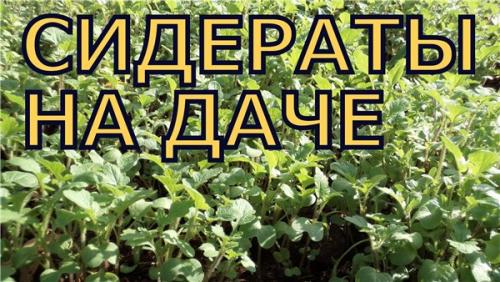

Siderata can be sown both in spring and autumn. Sowing green manure in autumn is more effective - "green fertilizer" performs, among others, the function of mulch for the winter, protecting the ground from freezing. Therefore, today the main topic of our article is about what green manure to sow in autumn, how to care for them and why do it at all. Siderata in autumn: cheap and effective
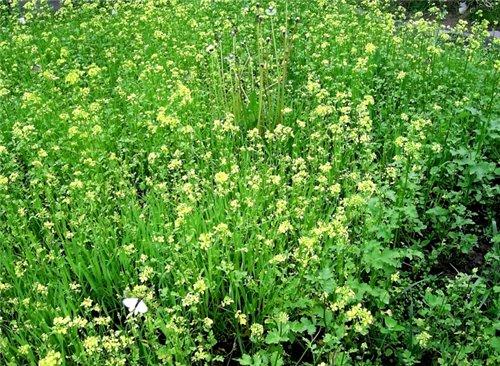

Now, when the number of animals in the farmsteads is kept less and less, and mineral fertilizers are not cheap, and they cannot replace adequate nutrition for the soil, more and more people are resorting to organic farming. The use of green manure in autumn is one of the main methods of organic farming.
What is the use of green manure sown in autumn?
• thanks to green manure, the winds will not dry out the soil; • thawed snow and heavy rains will not be able to wash out nutrients from the soil thanks to the green manure sown in the fall; surface potassium and phosphorus; • some green manure can help get rid of nematodes, wireworms and other pests and plant diseases; • thanks to the green manure planted in autumn, the productivity of vegetables will increase by one and a half to two times, moreover, they have the ability to suppress the growth of weeds.
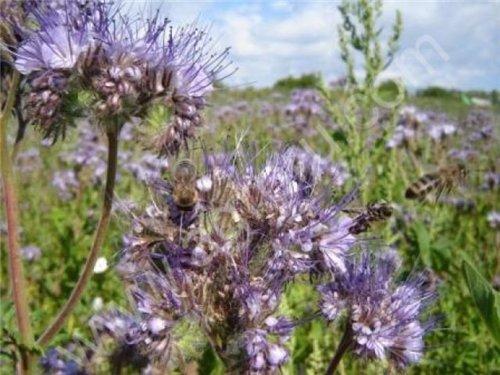

Phacelia When to sow green manure?
If we talk specifically about the autumn planting of siderates, then this should be done immediately after harvesting the main crop - that is, in August-September.Most often, mustard, phacelia, rapeseed, vetch are used as siderates for autumn, and after the latest crops, oats and rye can be sown in vegetable gardens - this winter siderate will grow in the spring. How to sow green manure? It's very simple: after harvesting and collecting plant residues, the land is cultivated with a cultivator or loosened with a flat cutter, if necessary, watered. Further, the seeds of the green manure selected for the fall are sown and covered with earth (up to 5 cm). As an option - just scatter the seeds in a "fan" on the ground and cover them with mulch (best of all - straw). We especially note that siderates, of course, are best sown as early as possible in August. After all, the warmer, the better the green manures planted in autumn grow, the more powerful their roots. And strong roots are not afraid of the first frost. And the tops of the first frosts are not terrible: with the exception, perhaps, of heat-loving buckwheat, all green manure crops are cold-resistant.
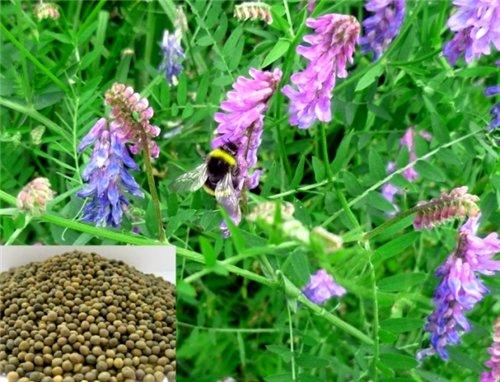

Spring Vika If for some reason you missed the planting dates for green manure in autumn or late summer, but really want to warm and enrich the land in winter - remember: even 10 centimeters of seedlings is better than nothing. Of course, the help to the soil from such seedlings will be much less than if your mustard grew by 50-70 cm. And if the weather is dry, and the cold has come abruptly, the seeds may not grow at all, and lie until spring. Then maybe it's better to wait until spring with green manure? And simply mulch the garden for the winter? The choice is yours.
Do I need to mow or close up the green manure planted in autumn?
The question is sore and controversial, there are pros and cons in both cases. But let's think: in meadows and fields, where everything is constantly blooming and turning green powerfully, does someone mow the grass and then plow it for the winter? Of course not. So, maybe let's listen to Mother Nature after all?
Mustard as fertilizer when digging. White mustard - like green manure when sowing
White mustard (Sinapis alba) is grown in almost all regions of Russia. For an annual plant of the cruciferous family, only permafrost zones are not suitable. The plant is unpretentious to care for. Mustard is used as a spice in cooking and in horticulture as a green fertilizer (green manure mustard). Consider when it is necessary to sow and dig up green manure mustard, recommendations for growing.
How to use mustard as a siderat
Mustard is grown from seeds. The size of the seed is 1-1.5 mm, it is convenient to lay them out one by one into the prepared grooves during the planting process. The plant will grow up to 70 cm tall. The leaf plates are pinnate, the plant blooms well. After the flowering period, pods with yellow seeds inside are formed (up to 15 pieces per pod). Flowers are bisexual, pollination occurs with the help of wind, bees.
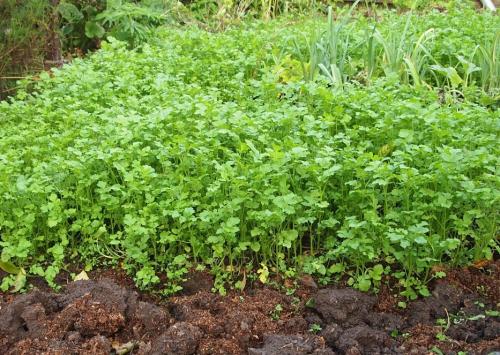

Green manure
Mustard is sown to fertilize the soil. The plant enriches the earth with phosphorus and nitrogen. Digging up the site along with the growing mustard, it is immediately buried in the ground. Stems and leaves give their beneficial microelements to the plants growing in the beds.
The use of mustard as a siderat is very convenient and effective. Green dressing does not require much effort from gardeners: the fertilizer does not need to be transported, it is enough just to embed it in the soil. To do this, use a hoe, hoe or shovel.
You can sow a crop as fertilizer in the spring before planting garden crops on the site or in the fall after harvesting. The plant can withstand frosts up to minus 5 degrees. If you plant seeds in April, you can have time to replenish the soil before planting garden plants.
Why mustard is useful for the soil
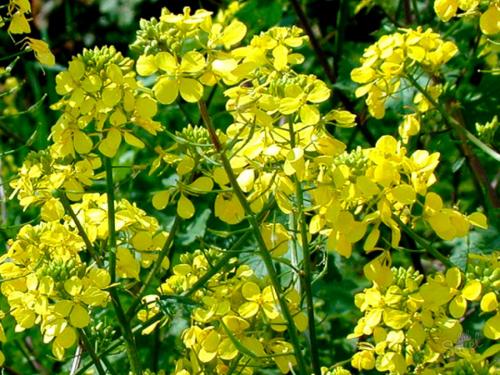

Mustard blossom
Mustard is prized as a highly digestible fertilizer. It sprouts quickly, builds up a large green mass (up to 400 kg per 1 hundred square meters).
The leaves and stems of the plant contain:
- Organic matter;
- Nitrogen;
- Phosphorus;
- Potassium.
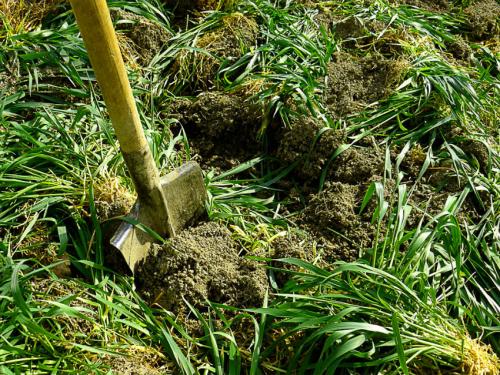

Burying green manure
The benefits of green manure:
- Enriches the soil with useful microelements (phosphorus, potassium, nitrogen), improves the fertile layer;
- Green manure is effective in restoring depleted soil. For 30-45 days, it releases organic substances and microelements that are assimilated in the soil;
- It is able to absorb hardly soluble forms of mineral microelements, making them readily available;
- Plays a role in improving the structure of the soil, it is used as a leavening agent in heavy soils. It performs the function of drainage, increases the air permeability of the soil, the three-meter tap root penetrates the ground and ventilates it;
- Prevents the washing out of nutrients during watering or rains. Horticultural crops protect the land from wind and water erosion;
- The plant secretes substances that prevent the growth of mold, is able to kill pathogenic bacteria, reduces the content of putrefactive microorganisms, scab in the ground;
- Siderat is used as a mulch layer;
- The place where the spice plant grows is protected from the attacks of pests (wireworm, slugs);
- During the flowering period, it is an excellent melliferous plant.
Is it possible to leave the green manure to stand all winter in order to dig it up in the spring?
In this case, loosening and digging of the soil with a flat cutter occurs without turning the soil at a depth of 5-7 cm. At the same time, green manure falls into the ground. The main thing is to do this before the tops grow above 10-15 cm in height. That's the whole answer to thinking about whether it is necessary to dig up, say, oats or rye like green manure in the fall.
We grow all vegetables and berries for the sake of the harvest - fruits, tubers, berries. Plants use a lot of nutrients to produce this yummy. Of course, we apply various fertilizers, but in addition to a set of minerals after vegetables and perennial planting of berries, when they grow in one place for more than three years, the structure and fertility of the soil deteriorates.
The humus layer is depleted, the number of beneficial microorganisms and earthworms decreases. The soil becomes compacted, sometimes practically cemented, the roots no longer receive enough oxygen, the plants get sick.
In order to improve the structure and fertility of the soil, the sowing of green manure is used.
What can not be planted after mustard
What is crop rotation, why is it necessary, and what are the basic principles of crop rotation in the garden, we have already figured out - see Crop rotation.
Recall: It is harmful to plant all crops in the garden all the time in one place. The main rule: crops of one family should not be planted in the same place earlier than after 3-4 years.
Among vegetable and berry crops, there are plants that are grown in one place for several years in a row, and there are those that do not tolerate re-planting in old beds for several years. Who should wait how long:
- Cabbage and other cruciferous plants (radishes, radishes, turnips) return to their previous beds no earlier than 2-3 years later.
- Cucumbers - every year in a new place, they return after 3-4 years.
- Tomatoes - can be planted in the same place in greenhouses, but with mandatory soil preparation - when digging in the fall, add fluffy lime (from 50 to 100 g per 1 sq. M.), Otherwise, the soil becomes too acidic and tomato bushes get sick.
- Beets, Swiss chard, spinach - they return to their old beds only after three to four years.
- Onions - it is permissible to plant for three years in a row in one bed, then pick up another place.
- Garlic - it is advisable not to grow it on the same bed for more than two years (the probability of soil contamination with stem nematode increases). Return after two years.
- Carrots - in the same place not earlier than in 2-3 years, otherwise a sharp decrease in yield or a lethal dose of fertilizers is required.
- Eggplants - in the same place earlier than after 2-3 years.
- Legumes (peas, beans, soybeans) - it is unacceptable to grow in the old place for four to five years. If after the legumes the beds are occupied by nightshades, you can return the peas to their previous beds after three years.
- Strawberries (strawberries) - in the same place for no longer than four years, then the beds should be transferred (see table of predecessors), it is unacceptable to replace raspberries. By the way, strawberries do not tolerate the land freed after Compositae, for example, Jerusalem artichoke, plants of the buttercup family - these crops make the soil for strawberries and strawberries unsuitable for three to four years. Do not plant strawberries (strawberries) after nightshades (peppers, tomatoes, potatoes) - these crops can be sick with a common disease - verticillary wilt, which is very dangerous for strawberries.
- Potatoes - it is advisable to grow in the same place not earlier than in 2-3 years. This rule is difficult for the gardener to follow, since a large piece of the garden is usually allocated for a potato plot. But if you plant potatoes not in one continuous area, but in ridges, then you can annually shift one bed to another territory.
Table of bad and good predecessors for the main fruit and berry and vegetable crops
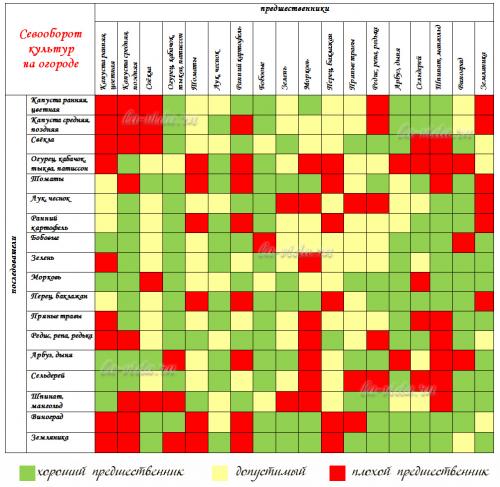

Herbs: tarragon, savory, basil, marjoram, coriander. Greens: lettuce and head lettuce, green onions (feathers).

